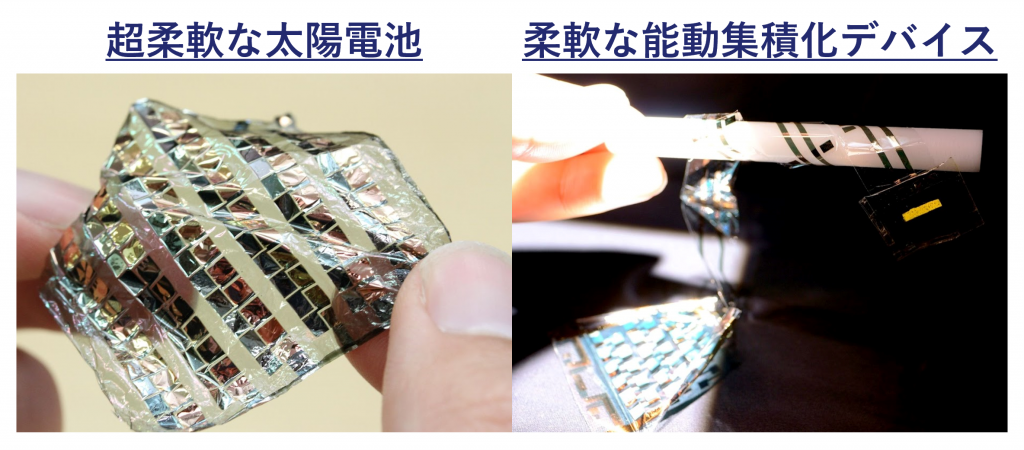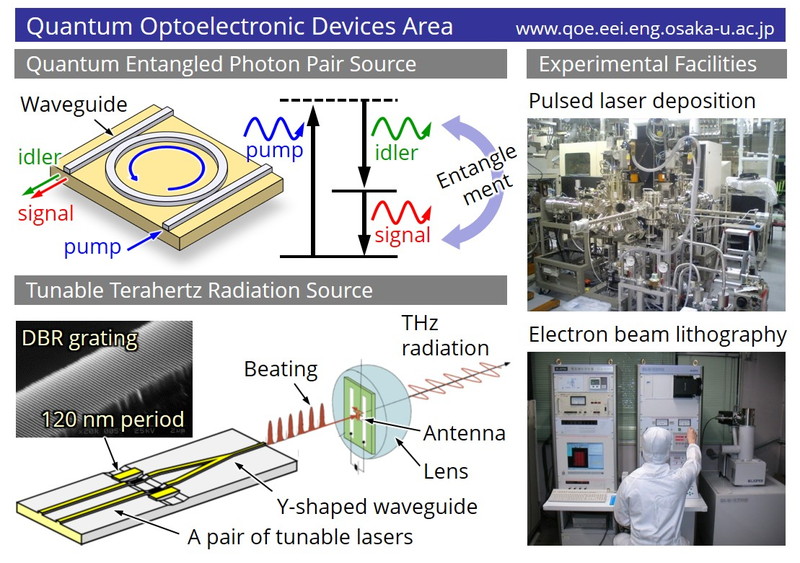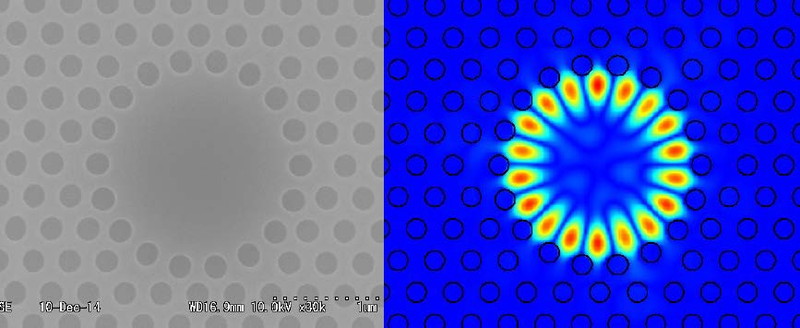Organic materials are characterized by their excellent flexibility, enabling the construction of flexible and soft systems that are difficult to achieve with inorganic electronics. We are focusing on developing new electronics and other devices using flexible organic materials. More specifically, the goal is to develop systems that can be implemented in applications where flexibility is desired, such as wearable electronics and soft robotics.

The area develops a series of quantum optoelectronic devices and systems: compact and energy-saving light sources with unachievable wavelength which contribute toward a low-carbon society, as well as ultra-high-speed quantum computation systems with high-degree of quantum superposition which enable the development of the new technologies such as big-data analysis and artificial intelligence. Current research targets are the fabrication of the nonlinear optical devices integrated with semiconductor lasers, quantum optical light sources made of wide-gap semiconductor, the exploration for the novel materials with huge optical nonlinearity, and the assembly of the above building-block devices into the novel systems.

Semiconductors lasers which are familiar as the light source of barcode readers are small and high-performance theoretically. Kondow lab is developing a circular resonator with the diameter of 1μm. The left figure shows the SEM image of the fabricated resonator, and right figure shows the light distribution in the resonator. At first, on a 2D photonic crystal structure, we fabricated the circular resonator where the light was confined and amplified. Then, a waveguide used for output was set near the resonator. As a result, a semiconductor laser without any energy loss can be fabricated. If this device is accomplished, we can realize the dream of achieving 100 times current communication capacity.

Top